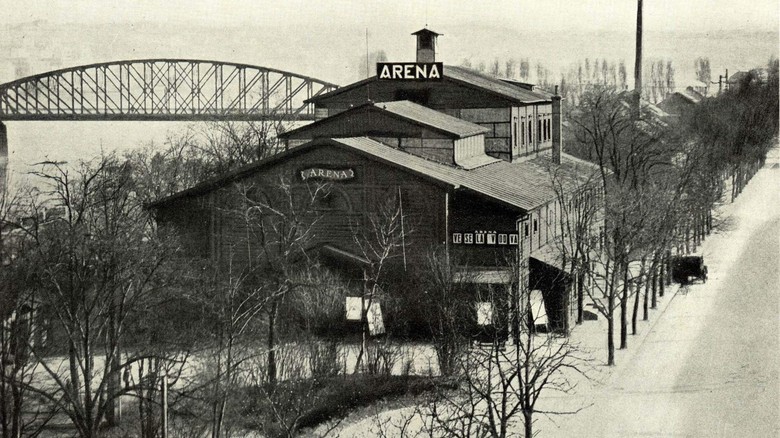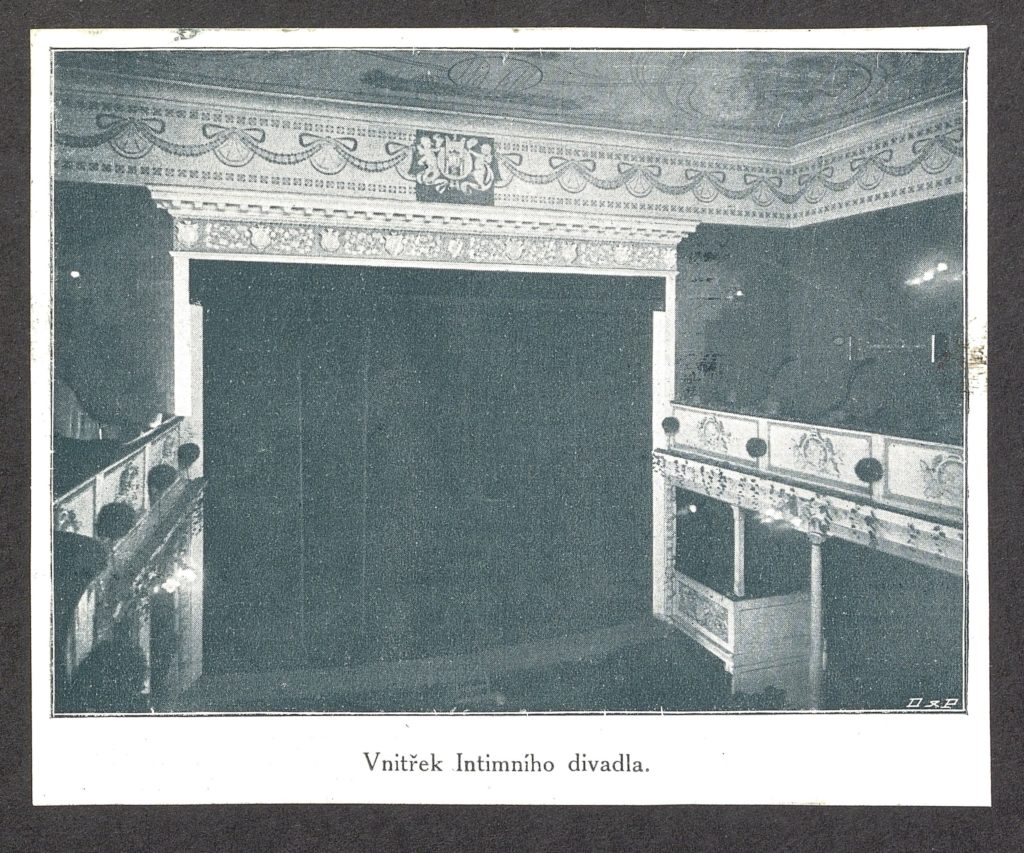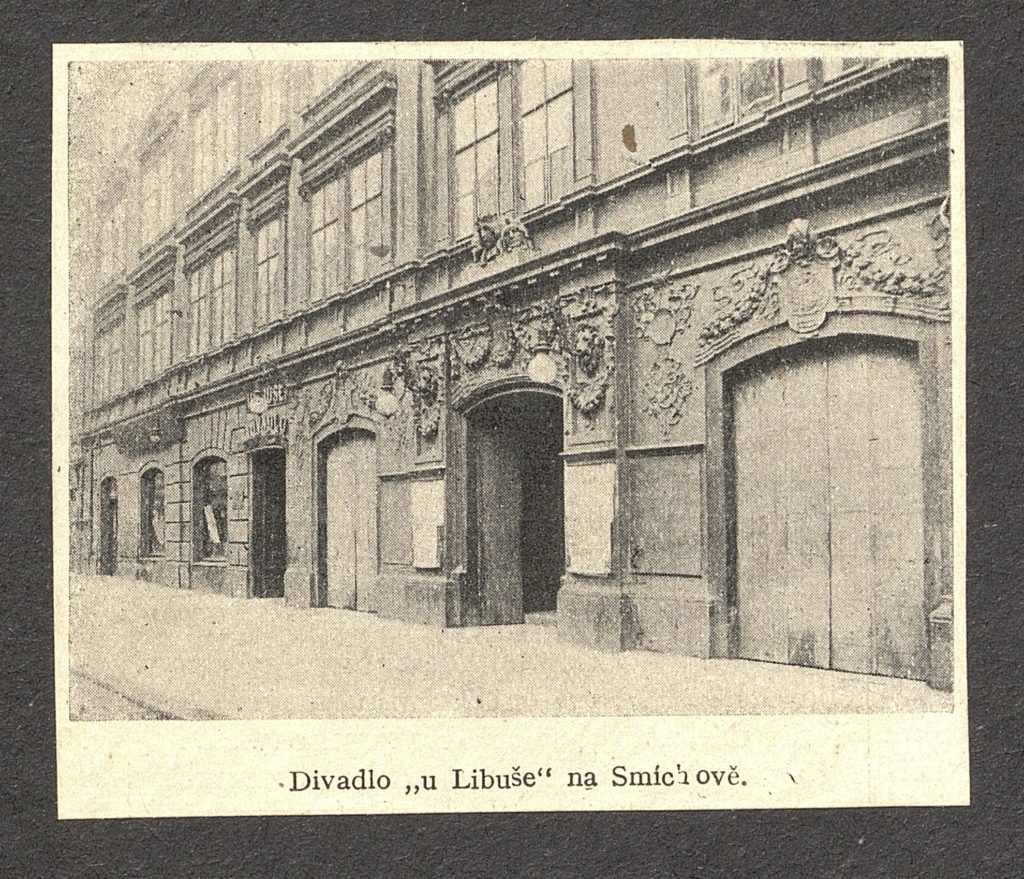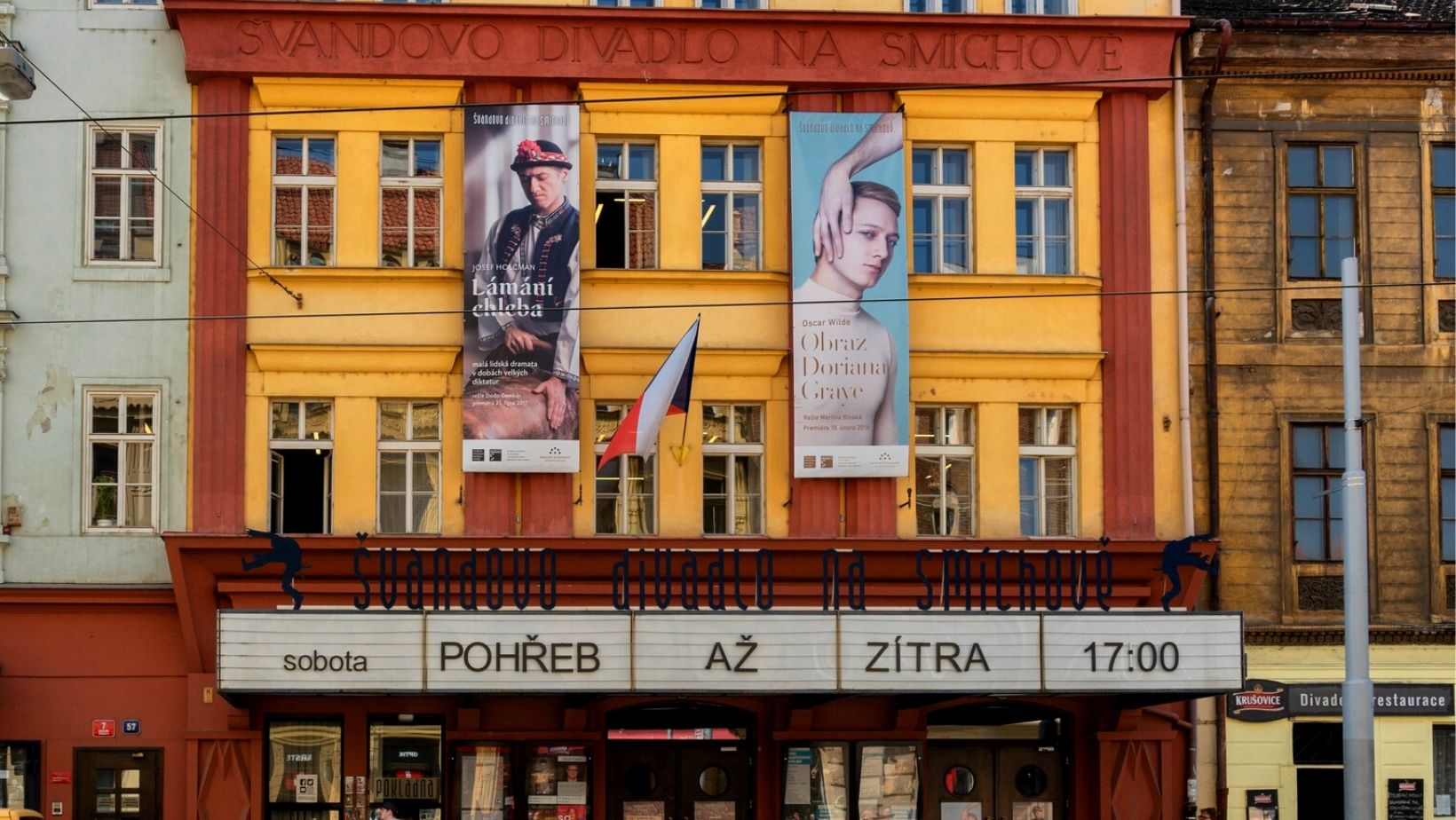Švanda Theatre is a theater in Štefánikova street in Smíchov. It continues the long tradition of the previous theater based in this building and its surroundings.
The first theatre company which started performing in the garden of an old house „U Libuše“ on 1 October 1881 was the originally touring theatre company of Pavel Švanda from Semčice.
This theatre group also performed on the summer stage „V lesíčku“ (at the barracks on the opposite side of the square), and after 1891 in the newly built wooden Arena on the Smichov’s embankment “Hořejší nábřeží” where they had performed until they finished their activities in 1934.
The first building was designed by Smichov’s architect and developer Josef Záhorský. There was a major transformation in 1900 when the theatre entrance was built right from the street instead of the garden. The works also involved space conversion of the stage and auditorium realized by the developer Šimek.
More adaptations followed in 1908, 1910, 1914, and later in the period of 1918 to 1920; a radical reconstruction of the front façade of the theatre was done according to Ladislav Machoň’s project in cubist style and the building became the main feature of Kinsky square.
The most remarkable part of the building in terms of art history is the six-axial front façade with cubist features designed by Ladislav Machoň at the end of 1920s. The façade renovated in yellow-red shades is designed so that the brick red accentuates the ground floor, vertical plastic structures, and the principle mouldings, whereas the yellow-ochre shades fill the rest of the façade areas.
In the 1950s, when the theatre group performed under the name Realistické divadlo (Realistic theatre), a construction of a new theatre building was seriously considered. For this purpose, a piece of land was found on what is today náměstí 14. října behind St. Wenceslas church.

The now non-existent Aréna theater opened in 1891 by Eliška Pešková after the death of her husband Pavel Švanda.
Although there was a competition for the best architectural design organized in 1957 in which the best price was awarded to the design of Jiří Gočár, the planned construction was cancelled in the 1960s and a decision was taken to adapt the old building in Štefánikova street.
After the war, authorities banned its traditional theatrical business and there arose the soviet version of the Realistic theater, including 1953 renaming the realistic theater Zdenek Nejedly.
In 1998, Richard Kraus, the theatre director at the time, commissioned the architect Jan Mayer to draft a study for the theatre reconstruction.
Mayer, together with other colleagues, presented the project at the Prague Quadrennial ´99. However, his study was not well received by the authorities. In the following year, there was a selection procedure to find a new theatre director. The applicants were also requested to present a theatre reconstruction project which would consider the future theatre operation. In October 1999, two theatre directors Daniel Hrbek a Michal Lang won the competition.
In October 2001 the building permit was granted and in December 2002, the theatre started its operations in the renovated space.

The interior of the theater in 1908 when it was called “Intimate”

The first theatre company which started performing in the garden of an old house „U Libuše“.
The Švanda Theatre celebrates 140 years!
Support Prague Morning!
We are proud to provide our readers from around the world with independent, and unbiased news for free.
Our dedicated team supports the local community, foreign residents and visitors of all nationalities through our website, social media and newsletter.
We appreciate that not everyone can afford to pay for our services but if you are able to, we ask you to support Prague Morning by making a contribution – no matter how small 🙂 .





